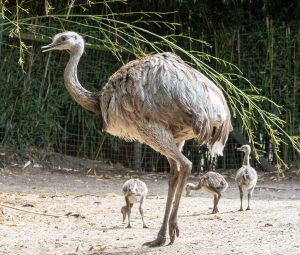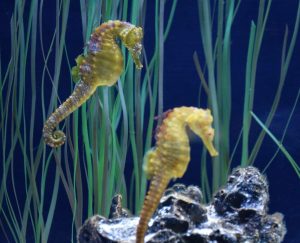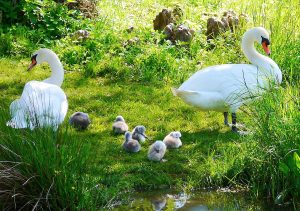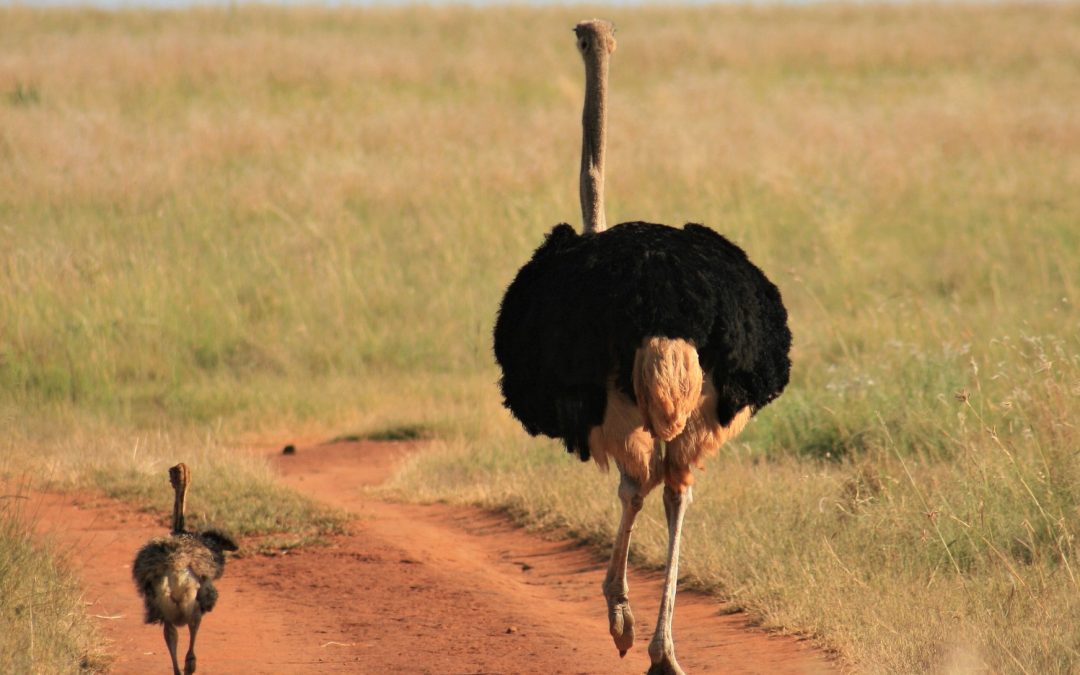Young couples often consider how to organise their family and professional lives together. Who will take a step back from their job to look after the children and for how long? Who pays the house instalments? And how do they share the housework? Sometimes there is a lack of role models, partly because not every young family talks openly about it.
Sometimes inspiration comes from the unexpected... in this case, I'll take a look at the animal kingdom. Here are examples that are - shall we say - remarkable. Who says women are predestined to take care of the children?!
 In the emus families, the males take care of the rearing of the young
In the emus families, the males take care of the rearing of the young
Emus - which are large ratites - live together in smaller groups. The pair formation is triggered by the female. She makes sounds that resemble muffled drumming noises and thus attracts the male's attention. Breeding and rearing the young is the male's task. Several females lay their eggs in the male's nest. If several females are involved, there can be up to 25 eggs in the nest. The cock broods for about 56 days. During this time he is very irritable and does not tolerate a hen looking after the enclosure. When the young have hatched, he looks after them and they grow up quickly under his care. It is a male-run nursery, so to speak. The young birds are fully grown after 12 to 14 months.
 In the world of the seahorses, the males have the babies
In the world of the seahorses, the males have the babies
It starts with early morning exercise together: in the world of the seahorses, males and females meet every morning and swim synchronously side by side with their tails hooked into each other. So much for romance!
Unique among all animal species: In seahorses, the males become pregnant. They have a belly pouch in which the female lays the eggs - between 150 and 2000 depending on the species. The female is then free. The male fertilises the eggs and swims around with them for about ten to twelve days. After this time, the pregnant male retreats into the sea grass and begins to give birth to the young fish.
The little ones are then already fully developed and can paddle out of their daddy's belly pocket. This completes the seahorse father's task: the young are on their own after birth and start hunting for small, planktonic crustaceans.
 Swans stay together for life
Swans stay together for life
Swan pairs bond for life. In a group of mute swans, it was found that 97% of the successfully breeding animals bred with the same partner the following year. It is extremely rare for swans to separate.
The pair builds the nest together. The male animal brings the material and the female builds it. The female is responsible for decoration and cosiness: Finally, she pads the nest thinly with down.
Breeding is then done by the female alone, only in the case of the mourning swan does the male also participate. In the other species, the male swan only watches over the young during the breeding season and almost always stays near the nest. When the young have hatched after about 40 days, both partners actively participate in raising the young. Very modern: The male takes care of the offspring just as much as the female. Fledged swans usually stay in a federation with the parent birds until the next breeding period.
Of course, these examples from the animal kingdom cannot be easily transferred to humans. But it is nice to see that there are very different distributions of tasks in nature! We are also allowed to think out-of-the-box when distributing tasks!





